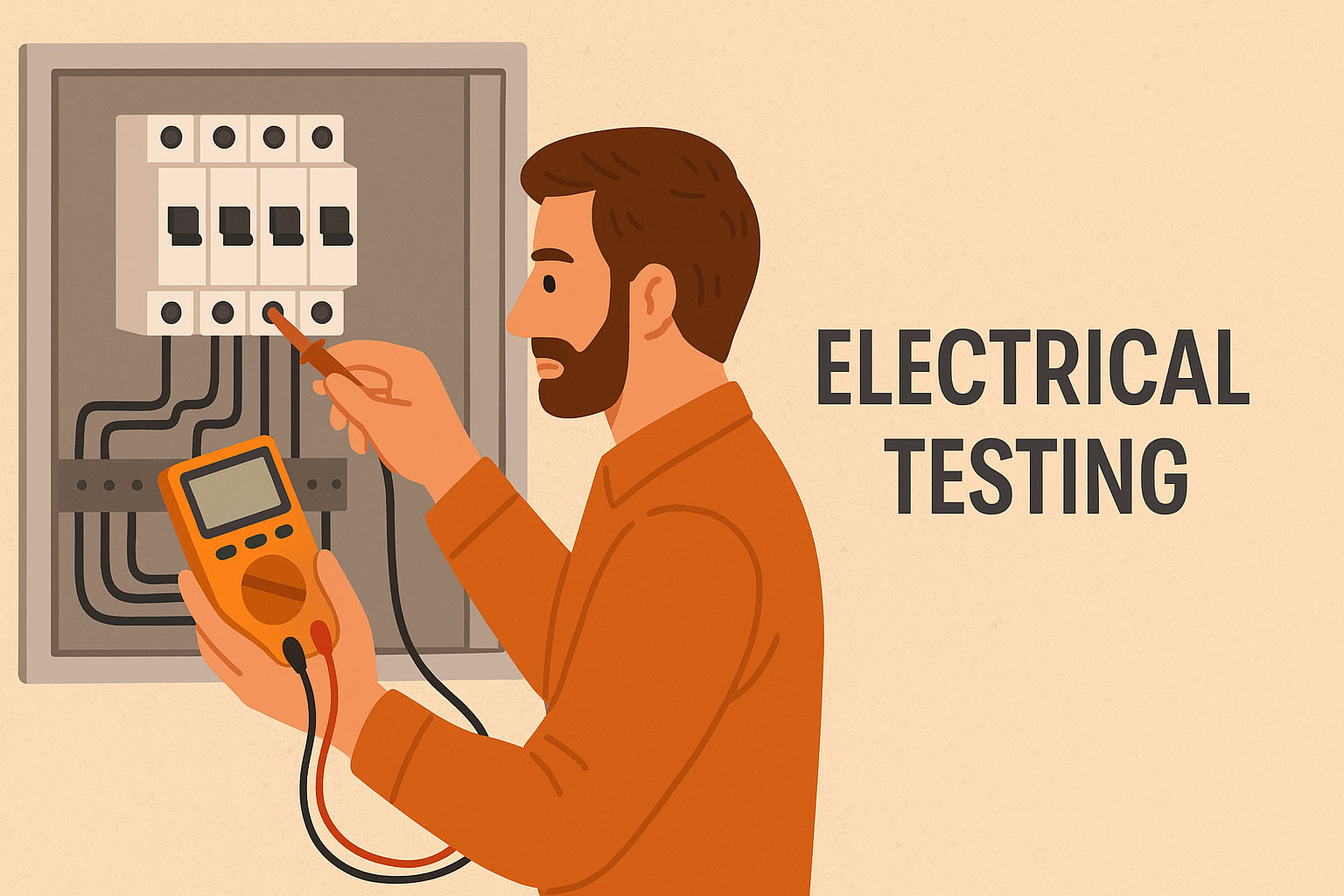Electrical testing is a critical process used to evaluate the safety, efficiency, and reliability of electrical systems and equipment. From home wiring inspections to industrial plant maintenance, proper testing helps prevent electric shocks, short circuits, fires, and equipment failures.
What is Electrical Testing?
Electrical testing involves measuring and analyzing key electrical parameters (voltage, current, resistance, insulation, etc.) using specialized instruments. It ensures compliance with safety standards (IEC, NEC, IS) and verifies that installations function correctly.
Why is Electrical Testing Important? Prevents Accidents – Reduces risks of shocks, fires, and electrocution.
Prevents Accidents – Reduces risks of shocks, fires, and electrocution. Ensures Compliance – Meets legal and regulatory requirements.
Ensures Compliance – Meets legal and regulatory requirements. Avoids Downtime – Identifies faults before they cause failures.
Avoids Downtime – Identifies faults before they cause failures. Protects Equipment – Confirms safe operating conditions.
Protects Equipment – Confirms safe operating conditions. Certifies Installations – Validates new or modified electrical systems.
Certifies Installations – Validates new or modified electrical systems.
Types of Electrical Testing
Test TypePurposeContinuity TestChecks if a circuit is complete and current flows properly.Insulation Resistance TestMeasures insulation quality between conductors or to earth.Earth Resistance TestVerifies earthing system’s ability to safely dissipate fault currents.Polarity TestEnsures live and neutral wires are correctly connected.High Voltage (HiPot) TestTests insulation strength under high-voltage stress.Loop Impedance TestMeasures fault loop resistance to ensure proper circuit breaker operation.RCD/ELCB TestingConfirms residual current devices trip at the correct leakage threshold (e.g., 30mA).
Common RCCB/ELCB Tripping Issues & Solutions
Why Do RCCBs/ELCBs Trip?
- Leakage Current (faulty insulation, moisture, damaged wires)
- Defective Appliances (old motors, water heaters, washing machines)
- Shared Neutral Wiring (causing imbalance)
- Nuisance Tripping (surges from heavy loads)
- Poor Earthing (high resistance or broken ground)
- Harmonics from Electronics (SMPS, inverters, VFDs)
Troubleshooting Steps
- Isolate Circuits – Turn off devices one by one to find the faulty one.
- Insulation Resistance Test – Use a megger to detect leakage paths.
- Check Earthing – Ensure earth resistance is ≤10Ω.
- Upgrade to Type B RCCB – For circuits with inverters, EV chargers, or VFDs.
- Consult an Electrician – If tripping persists, a professional should diagnose internal faults.
When is Electrical Testing Required?
- After new installations (wiring, panels, machines)
- During preventive maintenance (factories, commercial buildings)
- After electrical modifications (upgrades, expansions)
- Following faults or failures (unexplained tripping, shocks)
- Before commissioning (new buildings, industrial setups)
Essential Electrical Testing Instruments
- Digital Multimeter (DMM) – Measures voltage, current, resistance.
- Insulation Tester (Megger) – Checks insulation integrity.
- Earth Resistance Tester – Validates grounding system.
- Clamp Meter – Measures current without disconnecting wires.
- Loop/PSC Tester – Tests fault loop impedance.
- RCD/ELCB Tester – Verifies trip time and leakage sensitivity.
Safety Precautions for Electrical Testing De-energize circuits where possible before testing.
De-energize circuits where possible before testing. Use PPE (gloves, insulated tools, safety goggles).
Use PPE (gloves, insulated tools, safety goggles). Follow Lockout-Tagout (LOTO) for high-risk testing.
Follow Lockout-Tagout (LOTO) for high-risk testing. Only trained professionals should conduct high-voltage tests.
Only trained professionals should conduct high-voltage tests. Use calibrated instruments for accurate readings.
Use calibrated instruments for accurate readings.
Reporting & Documentation
A proper test report should include:
- Date & location of testing
- Test type & instruments used
- Measured values & observations
- Pass/Fail status
- Signature of certified tester
Conclusion
Electrical testing is non-negotiable for safety, compliance, and reliability. Whether for home, commercial, or industrial applications, regular testing prevents hazards and ensures smooth operations.
Investing in proper electrical testing saves lives, equipment, and costly downtime.

